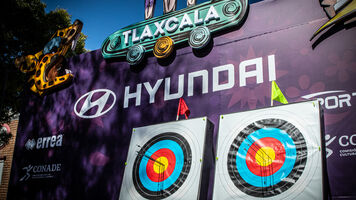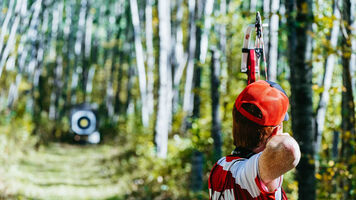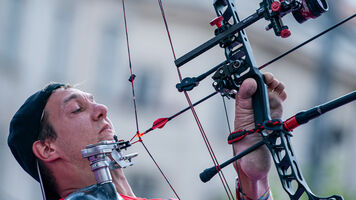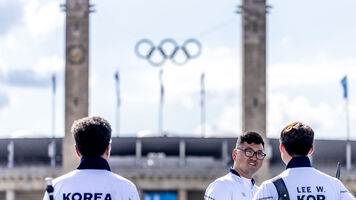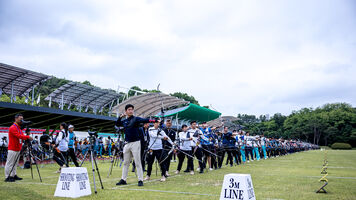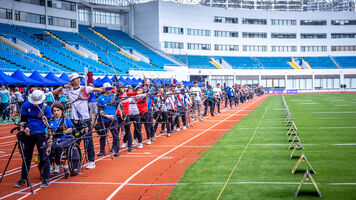Beginner’s guide to the Cortina 2018 World Archery Field Championships
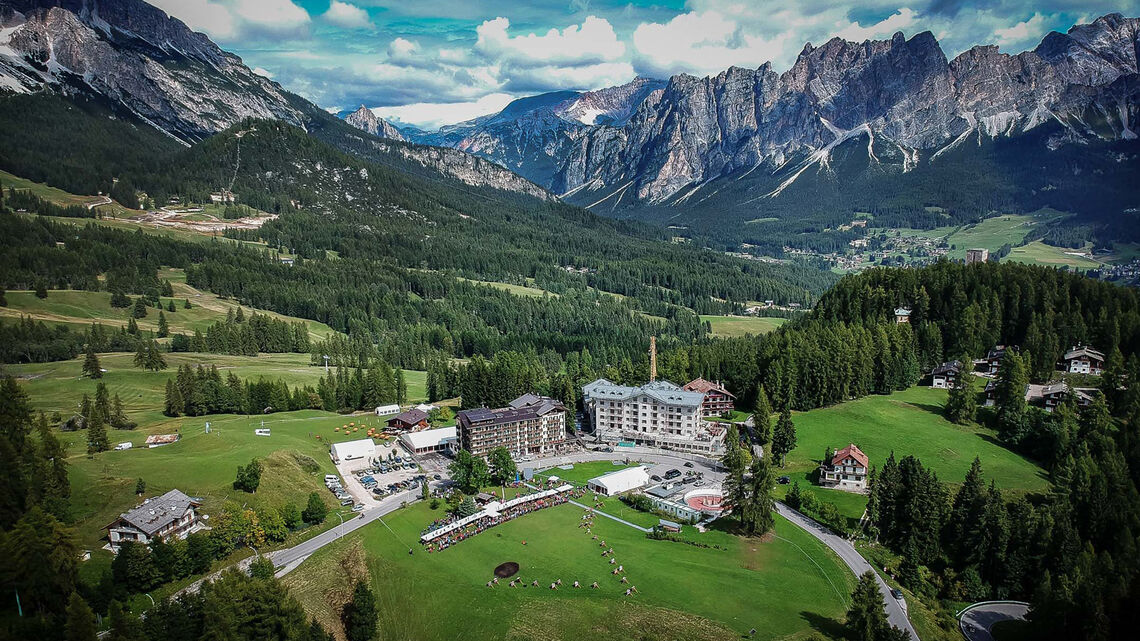
Field archery is a beautiful mix of incredible scenery, phenomenal backdrops, nature and elite, precision competition. The 2018 World Archery Field Championships bring us to the mountains of northeastern Italy, which are – by any reckoning – impressive.
The courses are no less imposing, with the tricky slopes and challenging terrain than only ski pistes can provide. It should all make for a test that will truly separate the very best field archers from the rest.
Factsheet: Cortina 2018
- Venue: Pocol village (qualification and eliminations) and Trampolino Olimpico ski jumping hill
- Dates: 4-9 September 2018
- Number of athletes: 261 (85 recurve, 103 compound, 73 barebow)
- Medals: 16 (individual recurve, compound and barebow, men and women; team men and women; junior and senior categories)
Defending Champions
- Individual
- Recurve: senior – Brady Ellison, USA; Amy Oliver, Great Britain (not attending). Junior – Alen Remar, Croatia; Chiara Rebagliati, Italy (now senior).
- Compound: senior – Steve Anderson, USA; Irene Franchini, Italy. Junior – Nico Wiener, Austria (now senior); Sophia Strachan, USA.
- Barebow: senior – Erik Jonsson, Sweden; Chantal Porte, France (not attending). Junior – Alessio Noceti, Italy (now senior); Sara Noceti, Italy (now recurve).
- Team
- Men: senior – USA; junior – USA.
- Women: senior – Great Britain; junior – Italy.
Three facts
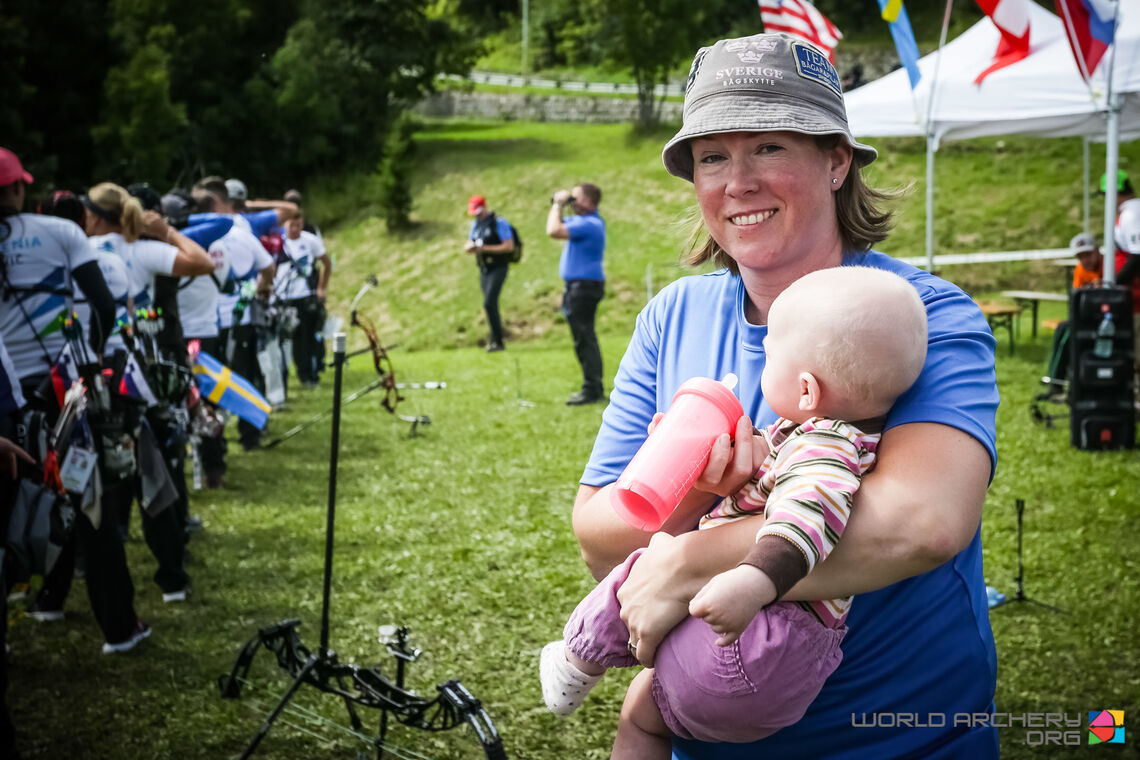
1) The Swedes. Erik Jonsson won this event in 2014 and 2016 and his partner Lina Bjorklund in 2012 and 2014. The barebow couple arrived in Cortina with their newborn child – and are favourites again.
(New mothers have been known to win championships in the past.)
2) Rivalry. Brady Ellison and Jean-Charles Valladont have one of the best rivalries around – especially on the field course. Both avid outdoorsmen, Valladont won the world field in 2012, Ellison in 2014 and 2016. But at the Olympics in Rio, JC finished second and Brady third.
This new competition format (see below) is a prime opportunity for a newcomer to climb up the ranks and knock one of this pair off the top spot in the discipline. But, let’s be honest, that won’t be easy.
3) Eighteen years ago. The World Archery Field Championships have been held in Cortina, Italy before. Eighteen years ago, Sweden’s Morgan Lundin took compound men’s gold – and he’s the only individual champion from that edition to return in 2018.
The 1988 world field was held about 100km directly to the west in Bolzano, and the 1972 approximately 200km southeast in Gorizia; all in the same region of northeastern Italy.
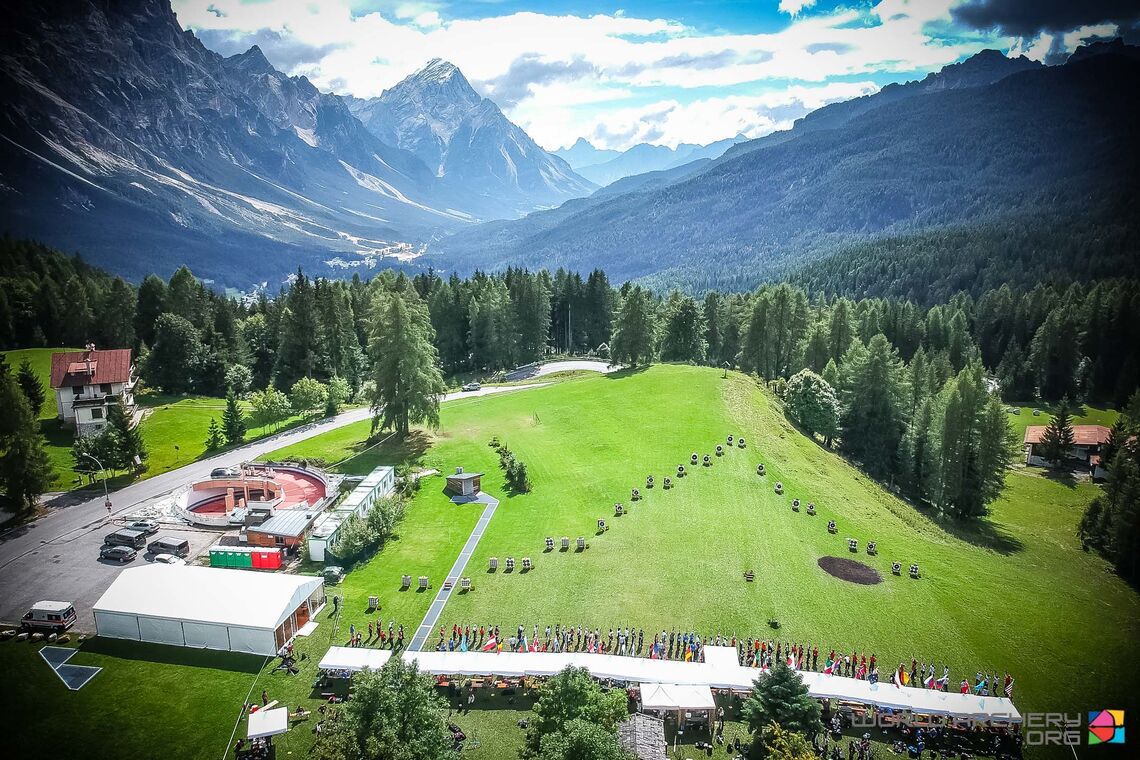
Schedule
Tuesday 4 September: Practice.
Wednesday 5 September: Qualification day one.
Thursday 6 September: Qualification day two.
Friday 7 September: Individual eliminations.
Saturday 8 September: Individual and team eliminations (morning); team finals (evening).
Sunday 9 September: Individual finals.
Equipment
Compound: A bow invented in the 1960s that uses a levering system of cables and pulleys to efficiently impart energy from bent limbs to an arrow upon release, which can then travel at speeds of over 250kph.
Inherently more accurate than traditional equipment, compound bows are lighter to hold at full draw and athletes are permitted to use magnifying lenses in their sights, levelling bubbles and mechanical release aids.
Recurve: The modern evolution of traditional bows that have been used around the world for 1000s of years. The limbs curve away from the archer at the top, giving the “re-curve” its name.
An archer holds the riser, in the grip, and draws the string back to their face, placing their hand under their chin, using a finger tab to protect their fingers from the string. He or she aims at the target using a front sight.
The arrow, sitting on a rest attached to the riser, is propelled at speeds of over 200kph when the archer releases the string.
Barebow: Similar in equipment to the recurve discipline, barebow archers are not permitted to use sights, excessive weights, dampers or stabilisers. They may use modern carbon and aluminium arrows, modern bows and rests.
Most make use of a technique called ‘string walking’, which entails moving the draw hand up and down the string at different distances while aiming with the point of an arrow.
How it works
The 2018 World Archery Field Championships introduce a new competition structure. There are three stages to the tournament: qualification, shoot-up eliminations, and finals.
Qualification: Athletes shoot two days of 24-target courses (set out in a similar manner to golf) across changing terrain, through woods and around the mountainous landscape. One day consists of marked-distance targets, one day consists of unmarked-distance targets. Athletes shoot three arrows at each target.
Targets are set between five and 60 metres away. The targets measure between 20 and 80 centimetres in diameter and have six concentric scoring rings, separated into two colours. The inner colour, the gold, scores six or five points. The black scores four, three, two or one points.
Athletes are ranked according to their total score for the 48 targets.
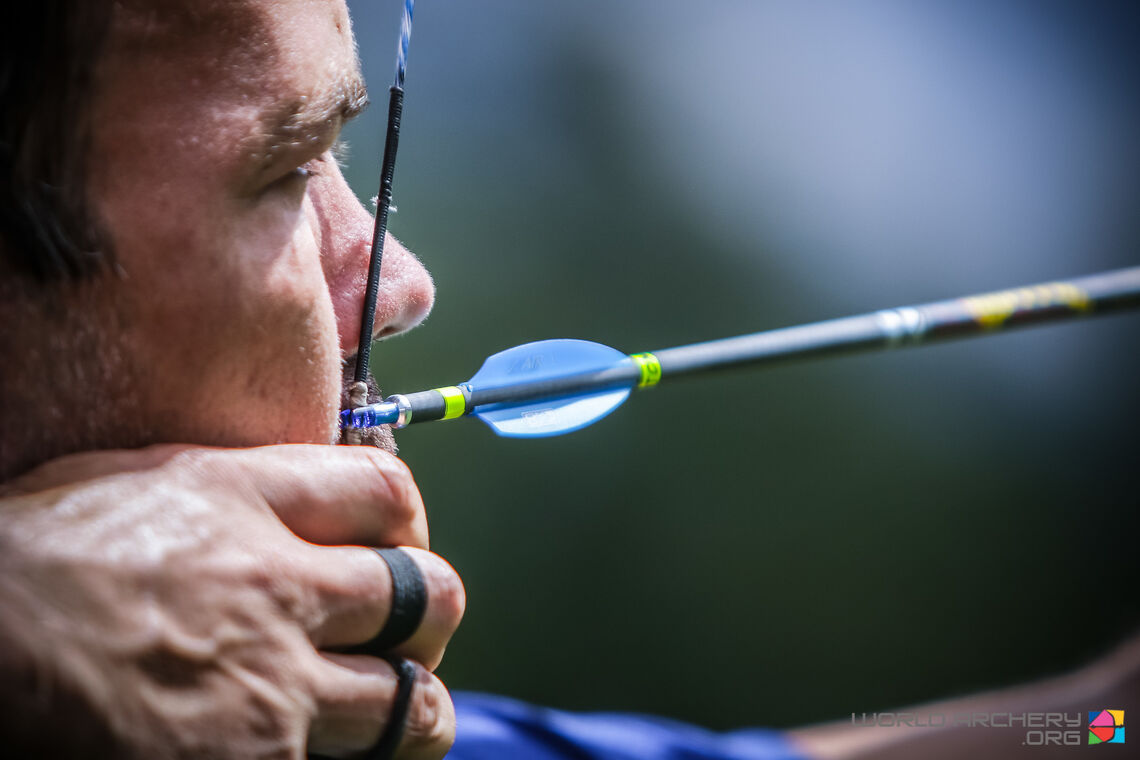
Elimination: The top two ranked archers after qualification are pre-seeded into the semifinals. All other archers are separated into pools.
The lowest two seeded archers in each pool shoot a match, with the loser eliminated and the winner shooting against the next-lowest-seeded archer – and so on – until only one athlete remains in each match. Pool winners compete to qualify for the semifinals.
Finals: Semifinalists shoot a standard finals set-up, with the two winners proceeding to shoot for gold and the losers entering the bronze medal match.
Archers to watch
Completely subjective lists of the five athletes to watch in each bowstyle, irrespective of gender.
Barebow
- Lina Bjorklund, Sweden
- Erik Jonsson, Sweden (defending champion)
- Cinzia Noziglia, Italy (World Games Champion)
- Istvan Kakas, Hungary (World Games Champion)
- Tina Gutman, Slovenia
Compound
- Irene Franchini, Italy (defending champion)
- Steve Anderson, USA (defending champion)
- Mike Schloesser, Netherlands (world number one)
- Linda Ochoa-Anderson, Mexico
- Chris White, Great Britain
Recurve
- Brady Ellison, USA (defending champion)
- Lisa Unruh, Germany (World Games Champion)
- Jean-Charles Valladont, France
- Naomi Folkard, Great Britain
- Sebastian Rohrberg, Germany
The 2018 World Archery Field Championships take place on 4-9 September in Cortina, Italy.







